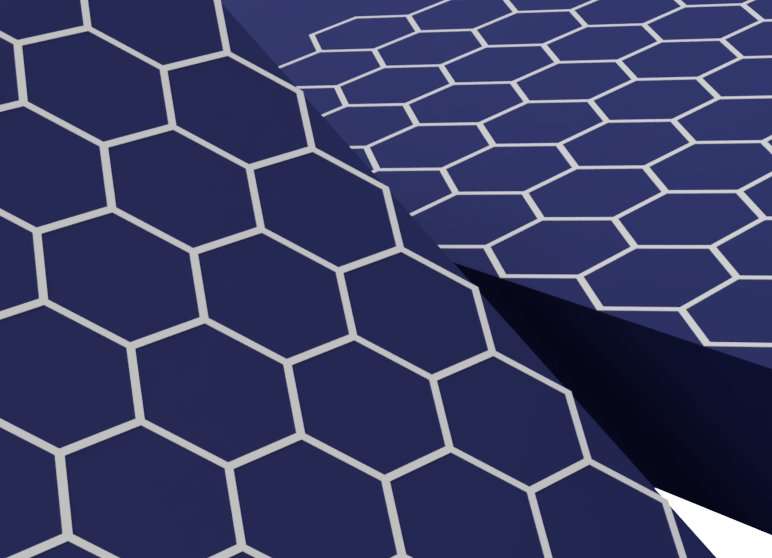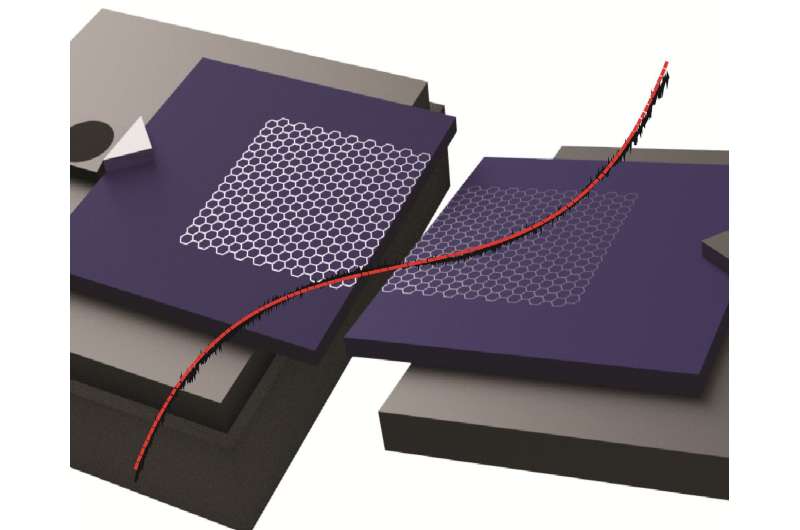Dynamic tunneling junctions at the atomic intersection of two twisted graphene edges

Leiden physicists and chemists have managed to bring two graphene layers so close together that an electric current spontaneously jumps across. In the future, this could enable scientists to study the edges of graphene and use them for sequencing DNA with a precision beyond existing technologies. The study is published in Nano Letters.
How do you study an object that is so small it won't even reflect light? In this case, physicists like to send a current through to measure its conductance, which reveals many properties. For extremely small objects such as a molecules, this is easier said than done. Researchers would need electrodes smaller than the molecule. Leiden research teams of physicist Jan van Ruitenbeek and chemist Grégory F. Schneider devised a way to dodge this problem. They tilted two one-atom-thick sheets of graphene such that they only met at one point, where electrons jumped across from one layer to the other.
Previous attempts with graphene electrodes failed because the layers are floppy by nature. The Leiden scientists deposited them on a silicon substrate, making them rigid all the way to the edge. They brought both layers close enough together that tunneling occurred—a quantum mechanical phenomenon in which electrons spontaneously jump to a neighboring material, even though there is no direct contact. Any small object in between will enhance the tunneling. The number of electrons tunneling through reveals some of the material's properties.

One promising future application could be DNA sequencing. As a single DNA strand passes through the tight gap between the graphene layers, its nucleotide letters A, C, G and T will alternately allow a different number of electrons to tunnel through. From this, scientists might be able to read out a DNA strand relatively quickly. Van Ruitenbeek says, "Companies are now developing another method where they run a DNA strand through a hole that also has water flowing through with electrically charged particles. From the strength of the current, they know which base letter is partly blocking the hole. Our method is potentially much more accurate. Or better yet—we could combine both methods in the future."
Schneider: "Another important next step is to scan the edges of graphene, which is as attractive as DNA sequencing. The chemistry at the edge of graphene is extremely difficult to probe, and now we have a very precise devise to do so."
More information: Amedeo Bellunato et al. Dynamic Tunneling Junctions at the Atomic Intersection of Two Twisted Graphene Edges, Nano Letters (2018). DOI: 10.1021/acs.nanolett.8b00171
Journal information: Nano Letters
Provided by Leiden Institute of Physics




















